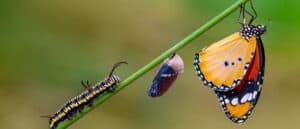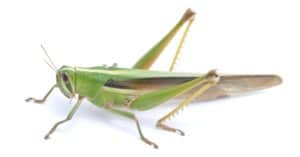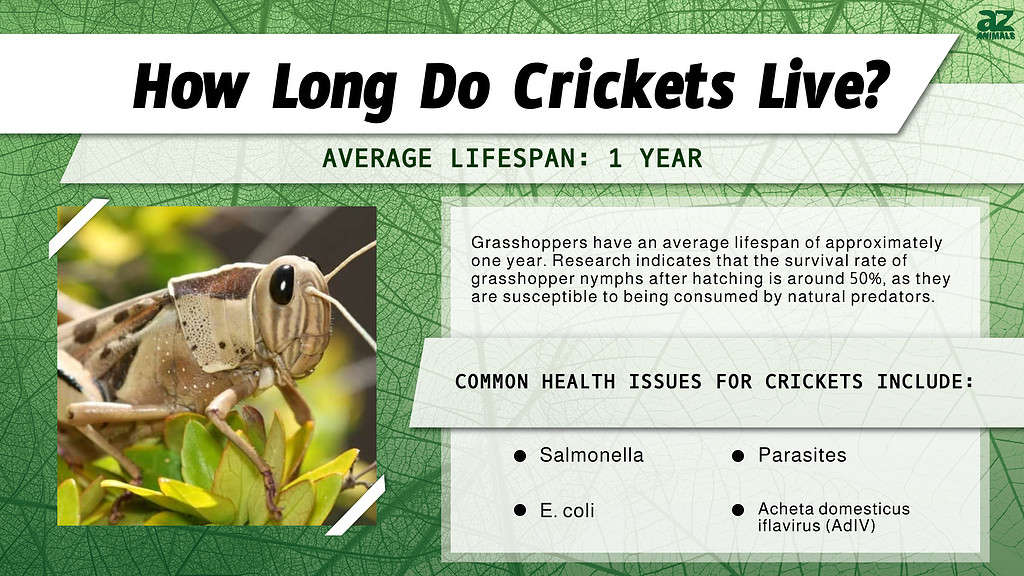
Grasshoppers are one of the most common insects to see once the warmer months come around. When most people think of grasshoppers, they recall happy childhood recollections of attempting to capture the flying insects in their backyard or out on a picnic. Around the world, many different cultures also view grasshoppers as a culinary delight as they happen to be an excellent source of protein.
Although grasshoppers are incredibly abundant, they’re much more interesting than you may have thought initially. Check out everything there is to know about the grasshopper lifespan and what factors threaten their survival out in the wild.
About Grasshoppers
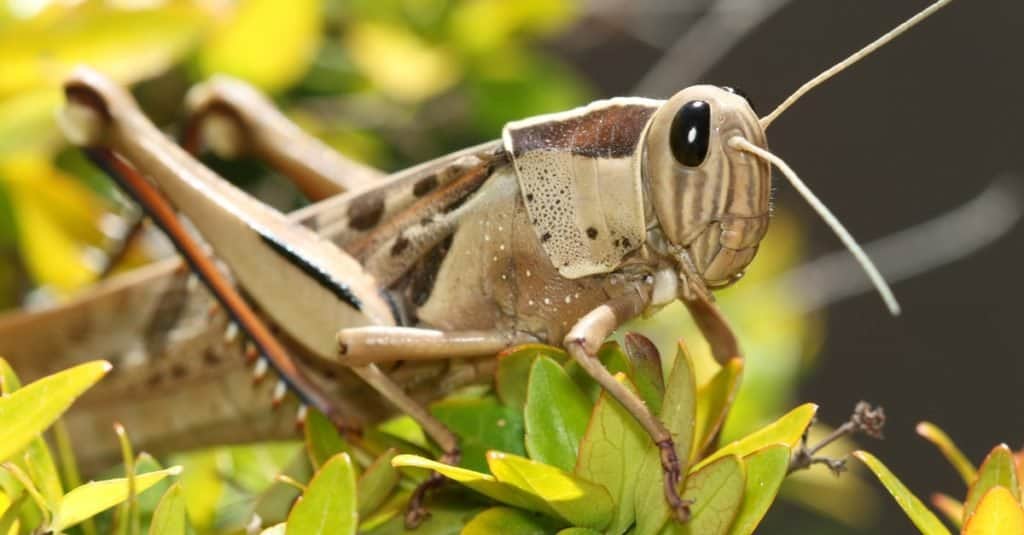
Grasshoppers are found in woodlands, shrubs, and in settings with favorable environments.
©Enid Versfeld/Shutterstock.com
Grasshoppers are a kind of insect that belongs to the Caelifera suborder. They are part of the oldest ancient living group of chewing herbivorous insects, going back to the early Triassic period, roughly 250 million years ago. The green-colored grasshoppers of the suborder Caelifera are the most numerous. However, other grasshopper species include the pink grasshopper, rainbow grasshopper, and blue grasshopper.
Grasshoppers are typically found in open areas such as deserts, woodlands, shrublands, arable lands, tropical forests, and savanna grasslands. Different kinds of grasshoppers have been discovered to live in many settings, owing to their ability to adapt to various environments.
Grasshoppers have also had a long relationship with humans. They are often associated with good luck and wealth. Grasshoppers have a spiritual connotation of fertility, representing fertile farmlands. In Greek mythology, grasshoppers represent immortality.
Now that we have a better understanding of this tiny insect, let’s hop on to learn about the average grasshopper lifespan.
How Long Do Grasshoppers Live?
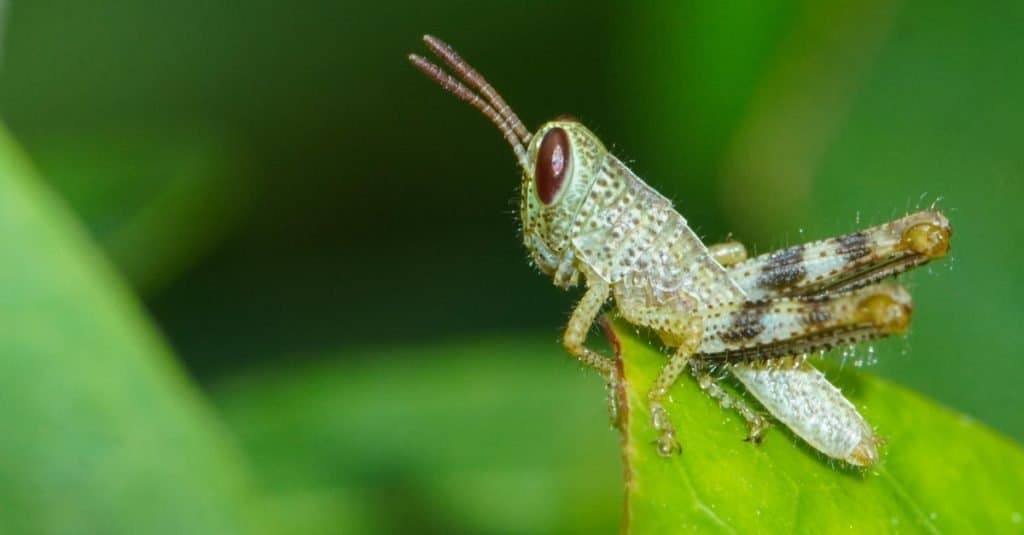
Grasshoppers have an average lifespan of 12 months.
©Lemonade Serenade/Shutterstock.com
The grasshopper has an average lifespan of about one year. According to research, the survival rate of grasshopper nymphs after hatching is roughly 50%, as they are likely to be devoured by natural predators. If they are not hunted down, they can live for up to a year, completing their whole life cycle from baby grasshoppers to adult grasshoppers.
Grasshoppers live a very short life. They spend most of their lives as nymphs. Now that we know all there is to know about the grasshopper lifespan let’s uncover the three stages of their fascinating life cycle.
The Average Grasshopper Life Cycle
Grasshoppers have a similar life cycle to many other insects. There are three stages of the grasshopper life cycle: the egg stage, nymph stage, and adult stage. Let’s explore each of these in more detail.
Egg Stage
The grasshopper life cycle begins with the egg stage. The fertilized eggs are laid beneath the sand or amid leaf litters by the female grasshopper by mid-summer. After laying eggs with the aid of an ovipositor, sticky material is sprayed over them, hardening to create egg pods. There are generally more than ten egg pods, each containing between 10 and 300 rice-shaped eggs. In fall and winter, the eggs are dormant for about 10 months. When the temperature rises in the spring or early summer, the eggs hatch into nymphs.
Nymph Stage
The juvenile nymphs (first instar nymphs) begin grazing on soft and succulent plant leaves immediately after hatching. Nymphs are smaller replicas of adult grasshoppers, although they are lighter in color and don’t have wings. Before becoming adults, nymphs go through 5–6 molts and change shape and structure. The nymphal stage can last anywhere from 5 to 10 days, depending on the species and the environmental conditions, particularly temperature and humidity. The nymphs grow in size when they molt, and wing pads form on the thorax region of the body.
Adult Stage
After 25 – 30 days, the nymphs’ wings fully grow, and they evolve into adults. As a result, the grasshopper is around eleven months old when one egg hatches into an adult. Adults reach sexual maturity in approximately 15 days and live for about 30 days. Because adults have wings, they are more mobile than nymphs, which helps them seek food and protect themselves from predators.
Factors That Impact The Grasshopper Lifespan

Predators such as birds, lizards, and rodents affect the life span of grasshoppers.
©iStock.com/Eileen Kumpf
It would be impossible to try and count the number of grasshoppers on the planet. There are just way too many of them! According to records, there are 11,000 different types of grasshoppers. The grasshoppers are a species of Least Concern in the IUCN Red List. However, this doesn’t mean that grasshoppers don’t have real threats to them while living out in the wild.
Some of the factors that impact the grasshopper lifespan include:
- Predators: Since they are tiny insects, the grasshopper is susceptible to predation from a number of animals. Some of the predators that they must watch out for the most include birds, lizards, mantids, spiders, and rodents.
- Human interference: Many people consider grasshoppers to be a frustrating pest to deal with. Grasshoppers are plant-eaters, and a few species may be major pests of cereals, vegetables, and pasture. This is especially when they swarm in their millions as locusts and devastate crops across large areas. Grasshoppers are also regarded as a delicacy in many cultures, because they are high in nutrients. Not only are these bugs high in protein, but they are also high in vitamins and minerals.
- Insecticides: Since grasshoppers are considered a nuisance, there are many insecticides that have been developed to get rid of them. There are numerous insecticide sprays that work against grasshoppers, including malathion, carbaryl, permethrin and bifenthrin.
The photo featured at the top of this post is © Ryan Wood - Public Domain
Thank you for reading! Have some feedback for us? Contact the AZ Animals editorial team.



